NGC1365 Galaxy, iPhone M44 Beehive Cluster
Posted: 30 January 2022
Wednesday, 26 January 2022, was cloudy. Thursday, 27 January, was clear, but I was speaking at a large community meeting that night so I did not open the observatory. Details about the meeting have been posted on my Satellite TV Reform blog. Friday, 28 January, was cloudy and very windy. Saturday, 29 January, was mostly clear but windy during the day. The wind calmed down as sunset approached.
|
Open: Saturday, 29 January 2022, 1748 MST Temperature: 69°F |
Session: 1715 Conditions: Mostly clear |
Equipment:
12" f/8 LX600 w/StarLock
2" 24mm UWA eyepiece
2" UHC filter
Camera:
D850 DSLR
iPhone 13 Pro Max
1755 MST: sunset (time approximate).
1759 MST: LX600 ON, StarLock OFF, High Precision OFF.
As I would be taking some photos later in the session with the iPhone 13 Pro Max mounted piggyback on the 12" telescope, I took this photo showing the configuration. Using the Levenhuk Smartphone Adapter, the iPhone was attached to a Manfrotto ballhead, which was mounted on the ScopeStuff Camera Adapter.
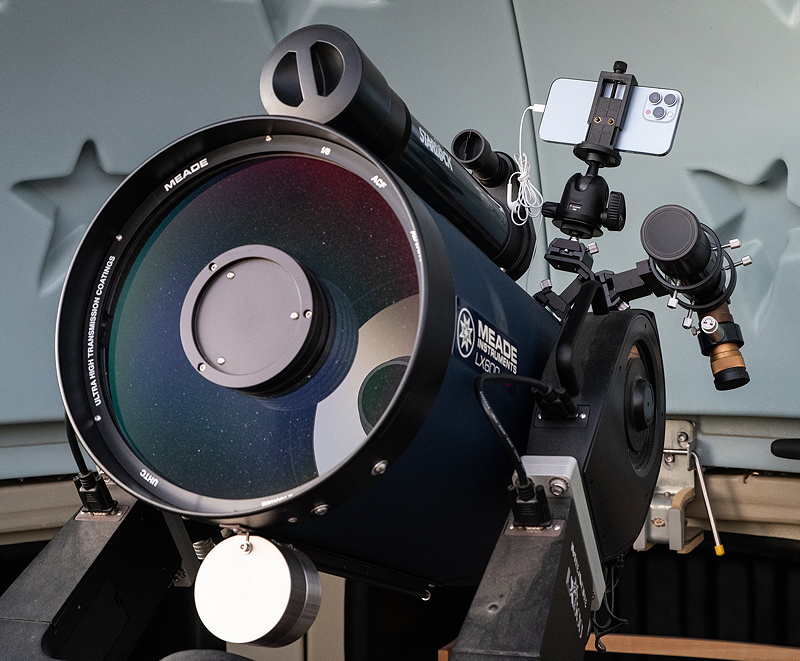
I also planned to use the iPhone to photograph the Zodiacal Light about two hours after sunset. I mounted the iPhone 13 Pro Max on a camera tripod using the Levenhuk adapter and the ballhead.
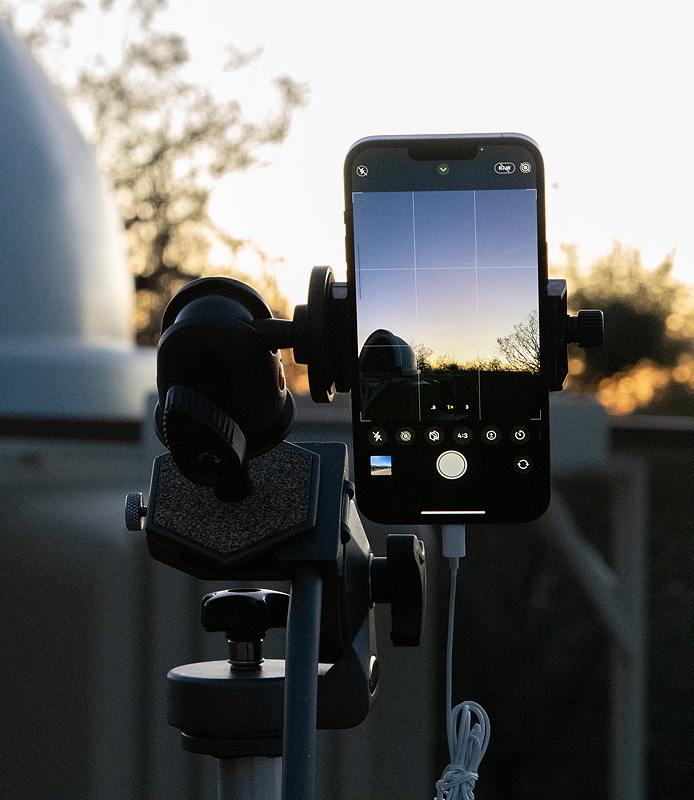
1816 MST: Viewed the planet Jupiter and the four Galilean Moons, 102X.
Slewed the 12" telescope to NGC1365 (galaxy), low in the southern sky. It was planned to be my first imaging target. It was not yet visible in the bright twilight sky. Astronomical Twilight would not end until 1918 MST.
I relaxed on the observatory patio bench while waiting for the sky to get darker. I also began monitoring the clouds, which were increasing, as seen in these two iPhone photos.
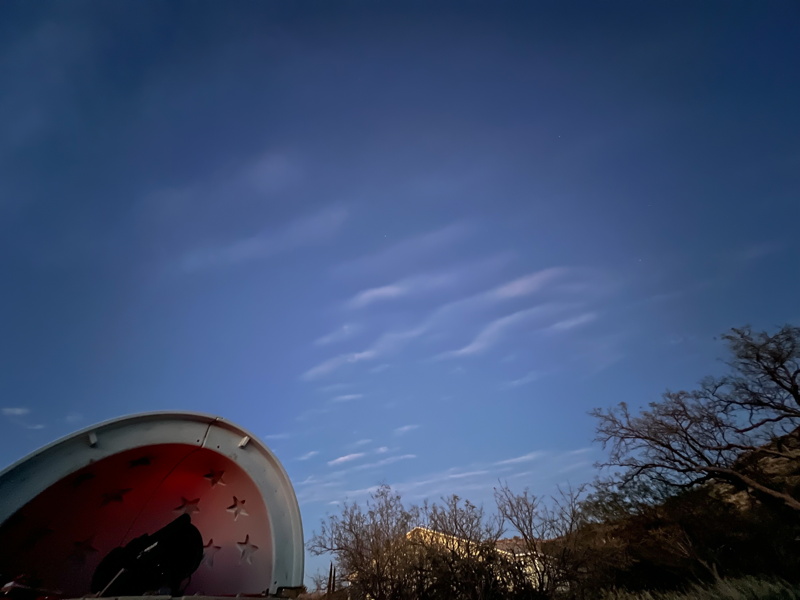
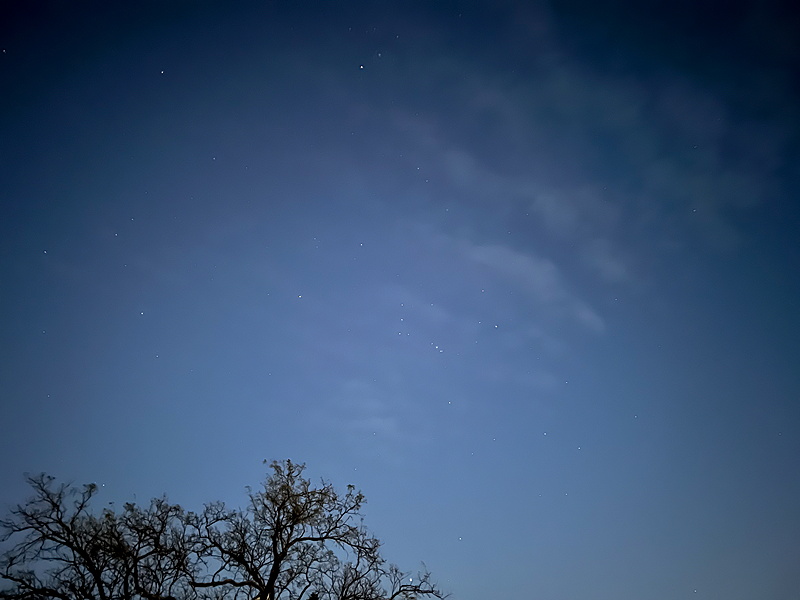
1850 MST: The clouds were moving off to the east, but there were thicker clouds along the western horizon.
1854 MST: NGC1365 (galaxy), was faintly visible, 102X.
1855 MST: The Zodiacal Light was becoming visible. Breezes were coming up. I prepared the D850 DSLR for imaging.
1902 MST: NGC1365 was nicely visible, 102X.
Mounted the D850 DSLR at prime focus + UHC filter, focused on Rigel, and locked the 12" primary mirror. Slewed to NGC1365.
1911 MST: StarLock ON.
I did some framing test exposures, 1 minute, ISO 12800. I then did StarLock autoguided, 5 minutes, ISO 3200, White Balance 5560K images. This is a stack of six images, for an effective exposure of 30 minutes.
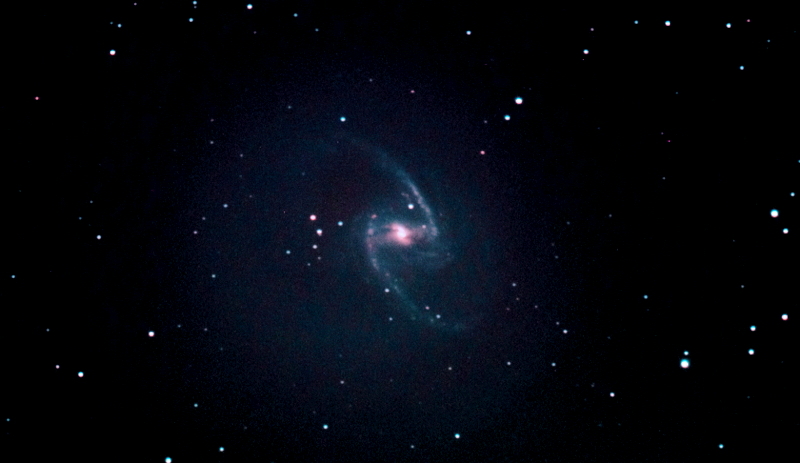
1955 MST: StarLock OFF.
Clouds were increasing. There were too many clouds in the western sky to photograph the Zodiacal Light. The eastern sky was still mostly clear. So I moved on to my next imaging target.
Viewed M44 (Praesepe, Beehive Cluster, open star cluster), 102X.
Mounted the iPhone 13 Pro Max piggyback on the telescope. Centered M44 in the iPhone 3X camera lens.
2011 MST: StarLock ON.
Just as I began imaging M44, clouds arrived at M44. I had to wait until they moved out of the way.
2024 MST: I took this StarLock autoguided iPhone image of M44 using NightCap Camera (Long Exposure, Light Boost, ISO 10752, 1sec, 1 minute, 3X lens), slightly cropped.
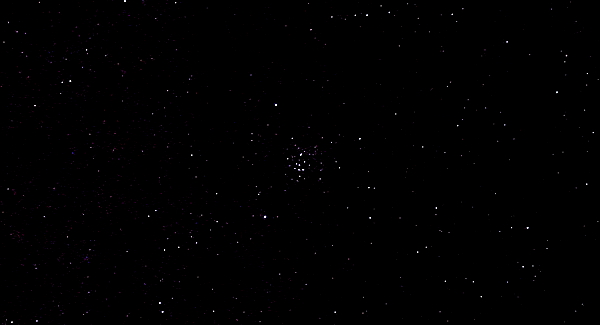
2027 MST: StarLock OFF.
The sky was now mostly cloudy. I hope to re-image M44 with the iPhone using a 8X telephoto lens on the next session.
2033 MST: LX600 OFF.
|
Close: Saturday, 29 January 2022, 2042 MST Temperature: 53°F |
Session Length: 2h 54m Conditions: Mostly cloudy |
Astronomy Technology Today has republished my review of the Phone Skope Digiscoping Adapter System in their Volume 16, Issue 1, issue. They first published the review in Volume 13, Issue 2.
Comments are welcome using Email. Twitter users can use the button below to tweet this report to their followers. Thanks.
Cassiopeia Observatory Home Page
Copyright ©2022 Michael L. Weasner / mweasner@me.com
URL = http://www.weasner.com/co/Reports/2022/01/30/index.html
